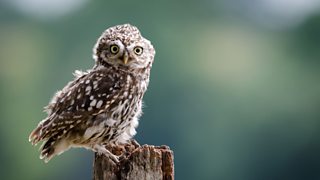Seven birds and their mysterious folklore
Our associations with certain types of birds can be traced back to the Stone Age, and have become part of our cultural and social history.
Without a proper understanding of how the world worked, people often tried to explain mysterious events or death by linking them to supernatural causes, giving rise to many of the superstitions we know today.
Here are seven infamous feathered friends and the myths and folklore associated with them.

-
![]()
Planet Puffin
Follow the fortunes of a Scottish puffin colony across the 2019 breeding season, with Emily Knight & Becky Ripley.
Are owls really wise?
In Western culture, owls are associated with wisdom – from depictions in children’s stories such as Winnie-the-Pooh to images of them wearing glasses, caps and gowns on university graduation cards.
-
![]()
Seven things you didn’t know about owls
Fascinating facts to celebrate our favourite nocturnal bird, the wise old owl.
The image of the wise owl arose in Greek mythology, with Athena (the Greek goddess of wisdom), often depicted with an owl perched on her shoulder. Owls were associated with education, intellect and magic, and were thought to have an inner light which enabled them to see through darkness. However, Roman soldiers were thought to consider owls a warning of defeat, with their hoot said to be a sign of death.
An owl’s perceived wisdom is probably based on its large eyes, which seem to stare right at us as if deep in thought. We have an instinctive emotional connection to this and project human qualities on to them. However, whilst owls are great nocturnal hunters, their brains are small in proportion to their body size, and they aren’t considered as intelligent as birds such as crows.
In Hinduism, when the Goddess Lakshmi (goddess of wealth) is shown travelling on an owl, she is a symbol of corruption of wealth. Owls therefore signify foolishness and misfortune.
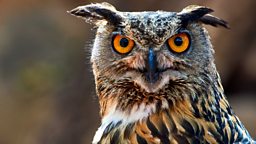
Does a robin’s visit mean anything?
Robins are one of the most common and loved garden birds, topping a 2015 poll to choose the UK's first national bird. Although they can be territorial and aggressive, folklore typically presents robins as kind and even holy.
There are a number of myths surrounding the robin's iconic red breast, often with strong Christian connections. Some attribute the red breast being a burn from a fire the robin was fanning to keep the baby Jesus warm. Others imagine it to be a bloodstain received when it tried to help Christ on the cross by picking out the thorns of his crown.
However, the fact the robin failed to save Jesus’s life means that in some folklore, robins are linked to death - if a robin entered your house at any time of year except November, it heralded a death in the household. Similarly, if a robin flew into a church and sang there it would lead to the death of a member of the congregation.
-
![]()
Eight reasons why we love robins
Naturalist Mark Cocker explores our love affair with the quintessential bird of Christmas.
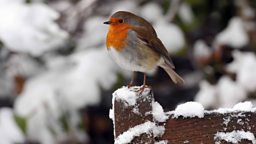
Originally, a robin redbreast was just known as redbreast, but acquired ‘Robin’ as Victorians liked naming birds. Despite being a year-round native bird in the UK, robins are often associated with Christmas, often appearing on Christmas cards. In Victorian times postmen wore red coats, and when sending Christmas cards took off commercially in the 1860s, robins were often depicted as postmen with a Yuletide message in their bills. The Victorians even nicknamed their postmen “robins”.
Robins are also sometimes seen as messengers for the spirit world.
A renowned gardener’s friend, robins are also sometimes seen as messengers for the spirit world. There are numerous anecdotes about their presence being a comfort following the passing of a loved one. Robins are quite bold and aren’t too concerned by the presence of a human which could have aided this reputation.
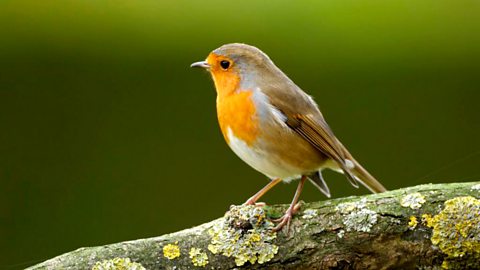
Why robins sing
It may sound melancholy to us but the robin's call has a clear purpose in autumn.
Swan or swan maiden?
Despite warnings they “can break your arm with their wing”, swans are often associated with grace and elegance, and as a symbol of love and fidelity due to their long-lasting, apparently monogamous relationships - swans usually mate for life.
-
![]()
Soul Music: Swan Lake
The story behind Tchaikovsky's ballet and the impact it has had on those who have heard and danced to it.
Swans feature heavily in mythology. Leda and the Swan is a story from Greek mythology in which Zeus, in the form of a swan, seduces Leda, Queen of Sparta, conceiving Helen of Troy. The mute swan was also thought to be one of the sacred birds of Apollo, and therefore considered a symbol of harmony and beauty. Its limited capabilities as a singer were sublimated to songbirds, creating the notion of a 'swan song'. A swan song refers to an ancient belief that upon death, a mute swan would sing a beautiful song, having been silent most of their lifetime.
-
![]()
Tweet of the Day: Mute Swan
Chris Packham presents the mute swan.
Swans were seen to have links to the spirit world in Celtic mythology, and able to shift between the earthly and supernatural realms. In the Irish legend of the Children of Lir, four royal children are transformed into swans by their wicked stepmother, Aoife. They fly away, and spend 900 years in their bird form, before being released and dying as ancient people.

In Western European folklore, humans could be transformed into swans as a curse, or swans could shape-shift into humans at will, becoming swan maidens. This idea forms the basis of Tchaikovsky’s ballet Swan Lake, a tale fashioned from Russian and German folktales, and one of the most popular ballets of all time.
Religion also has associations with swans. In Christianity, St Hugh of Lincoln became friends with a wild swan who was devoted to him. In Hinduism, swans are revered and compared to saintly people whose chief characteristic is to be in the world without getting attached to it, just as most of a swans feathers don't get wet despite being in water.
Black Swan theory originates from the incorrect presumption in Ancient Rome that black swans didn't exist, leading to the black swan as a metaphor for something that could, in theory exist, but doesn't. After the "discovery" of actual black swans, this became a metaphor or analogy for something, typically an unexpected event that has an unforeseen significance.
-
![]()
Tweet of the Day: Black Swan
Sir David Attenborough presents a widely regarded symbol of Australia, the black swan.

Good morning Mr Magpie
Few birds are so closely connected to superstitions and folklore than the magpie.
Before the spread of Christianity the magpie was often associated with good luck or fortune. The Romans believed magpies were highly intelligent, and in Ancient Greece magpies were deemed sacred to Bacchus, the god of wine. Some tribes of Native Americans believed that wearing a magpie feather was a sign of fearlessness, while others considered the magpie to be a sacred messenger of the creator, or even a guardian with shamanic abilities.
The Church viewed the magpie very differently. It's said that the magpie was the only bird not to go into Noah's ark, and also the only bird not to sing to comfort Jesus on the cross or go into a proper period of mourning because of its pied plumage, which also has an association with evil and bad fortune.

In medieval times magpies would have been found scavenging near battlegrounds, field hospitals, and the gallows in search of decaying flesh, and became associated with this. Victorians were so fearful of magpies that they nearly hunted them to extinction.
In European folklore, magpies are widely perceived as being attracted to sparkly, shiny objects to steal for their nests. Whilst magpies are indeed intelligent and inquisitive, this trait has been exaggerated. Magpies are actually highly intelligent birds and can use tools, play games, work in teams, and mimic human speech.
Has your day ever been filled with sorrow or joy depending on how many magpies you’ve seen?
The traditional children's nursery rhyme "One for Sorrow" depicts an old superstition, where the number of magpies you sees tells if you will have bad or good luck.
One for sorrow,
Two for joy,
Three for a girl,
Four for a boy,
Five for silver,
Six for gold,
Seven for a secret never to be told.
As magpies often mate for life, seeing just one magpie may mean it has lost its mate, increasing perceptions of it bringing bad luck. Many people believe there are ways to negate the bad luck, whether by saluting, waving, blinking, pinching a companion or turning on the spot.
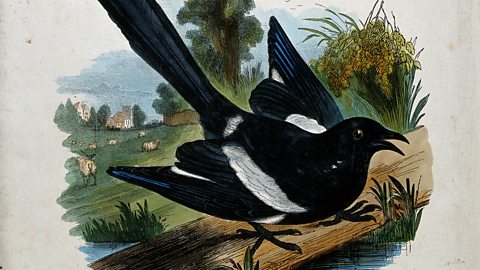
Hear how the magpie straddles good and evil
Writer Eleanor Matthews recalls how watching magpies became an enthralling fixation
Do puffins know the weather forecast?
Puffins are many people's favourite bird and it’s easy to see why with their striped colourful beaks, black and white plumage, portly shape and comical walk. They’re also very loyal - when puffins return from a winter at sea they find their way to the exact burrow where they’ve raised their chicks every year, and reunite with the mate they usually stay with for life.
Puffins have a long and mysterious folklore. During the Middle Ages it’s thought that Muslim and Jewish scholars couldn’t determine if various birds including puffins were fish or humans and called for them to be killed.
In Irish folklore, puffins are reincarnations of Celtic monks, and in the Faroe Islands they're known as prestur - priests. The word frater, Latin for ‘brother’ is also used to mean a friar, so the genus name of puffins (Fratercula) could be interpreted as ‘little brother’ or ‘little friar’ – aided by the puffin’s colouring and solemn demeanour, especially on land, where it walks slowly with its head bowed.
-
![]()
Tweet of the Day: Puffin
Miranda Krestovnikoff presents the story and sound of the puffin.
Puffins endure severe winter storms at sea, and are thus often linked with weather. In Iceland they are regarded as expert weather forecasters, while Inuit and Alaskan native tribes thought puffins had the power to actually change weather patterns and ward off storms.

Send a raven!
Ravens have appeared in our folklore worldwide for thousands of years, and have often been seen as a symbol of death and foreboding – partly due to their black plumage, coarse cries and diet of carrion (decaying flesh).
Stone Age communities sometimes exposed their dead instead of burying them and ravens picked the bones clean, much like the few sky burial practices left in places such as the Tibet, Mongolia and Bhutan to this day. Mostly, ravens are now seen as more of an occasional nuisance, preying on livestock and sometimes pecking dead animals.
However, ravens are one of the most intelligent of all birds, and as a talking bird, the raven also represents prophecy and insight, connecting the material and spiritual worlds. In Greek mythology, ravens were messengers of Apollo, god of prophecy, to the mortal world and a symbol of bad luck. Apollo is said to have sent a white raven to spy on his lover, Coronis. When the raven brought back the news that Coronis had been unfaithful to him, Apollo turned the raven’s feathers black in fury – which is apparently why all ravens are black today.
This myth of ravens as messengers is still prevelant today, most notably in Game of Thrones, where ravens are used as messenger birds, as well as guiding Bran Stark on his quest.
Nevertheless, ravens are more often regarded as harbingers of doom, most notably associated with the Tower of London. According to legend, England will fall if the ravens of the Tower of London ever leave or are removed. Don’t fret, as their wings are clipped …just to make sure they don’t. Phew.

Meet Brann the talking raven
Brett Westwood meets Brann the raven and Lloyd Buck, and they have a chat.
-
![]()
Natural Histories: Raven
Ravens have inspired fear as well as reverence and respect as Brett Westwood discovers.
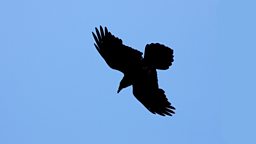
Storks bring babies
According to European folklore, storks are thought to bring babies to new parents. Although an ancient legend, this thought was popularised by a 19th-century Hans Christian Andersen story called "The Storks".

German folklore held that storks found babies ("stork stones") in caves or marshes and brought them to households in a basket on their backs or in their beaks. The babies would then be given to the mother or dropped down the chimney. Households would notify when they wanted children by placing sweets for the stork on the window sill.
Tales such as this also helped disguise the facts of life at a time of prudery, especially in Victorian England.
The myth of storks bringing babies is probably rooted in the birds’ migration and roosting habits. In Europe, storks arrive and breed in Spring, establishing their nests on roofs and other high, prominent places where their careful parenting can easily be seen.
Spring is generally associated with new growth, births and fertility – being roughly nine months after the summer solstice that celebrates fertility.
-
![]()
Tweet of the Day: White Stork
Michaela Strachan presents the white stork.
Greek and Roman mythology portray storks as models of parental devotion, and the bird is featured in at least three of Aesop's Fables. A Greek law called Pelargonia, from the Ancient Greek word pelargos for stork, required citizens to take care of their elderly parents, as storks do, and the Greeks also held that killing a stork could be punished with death. Followers of Islam also revere storks because they made an annual pilgrimage to Mecca on their migration.

More from Radio 4
-
![]()
Planet Puffin
Follow the fortunes of a Scottish puffin colony across the 2019 breeding season, with Emma Knight and Becky Ripley.
-
![]()
The pigeon: Britain’s most misunderstood bird?
How this feathered friend has helped us over the ages.
-
![]()
Seagull urban myths: fact or fiction?
Are any of the urban myths true surrounding the seagull and its Hitchcockian behaviours?
-
![]()
Is it a bird or is it a band?
Are you a twitcher or a muso? Try our bird or band quiz and find out!

